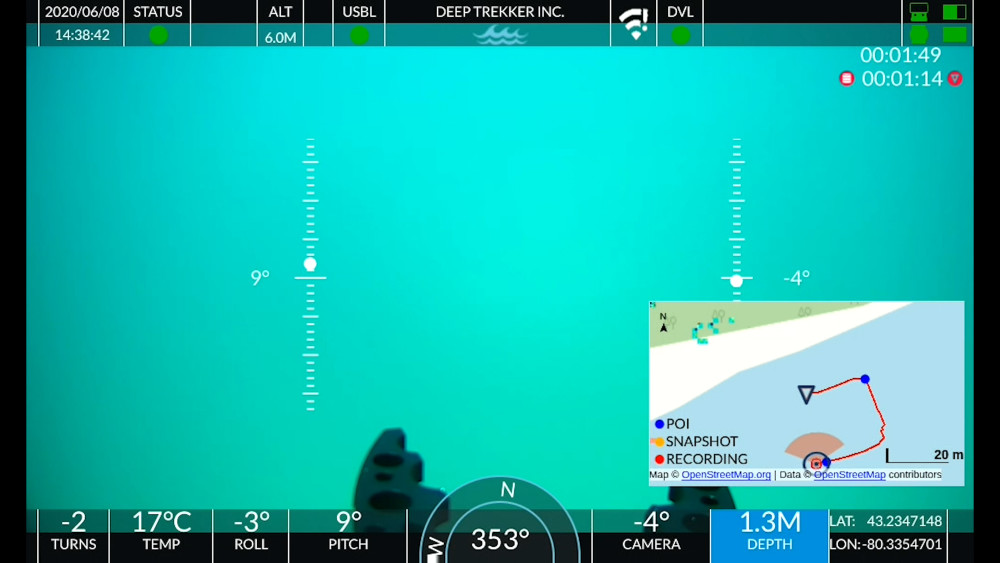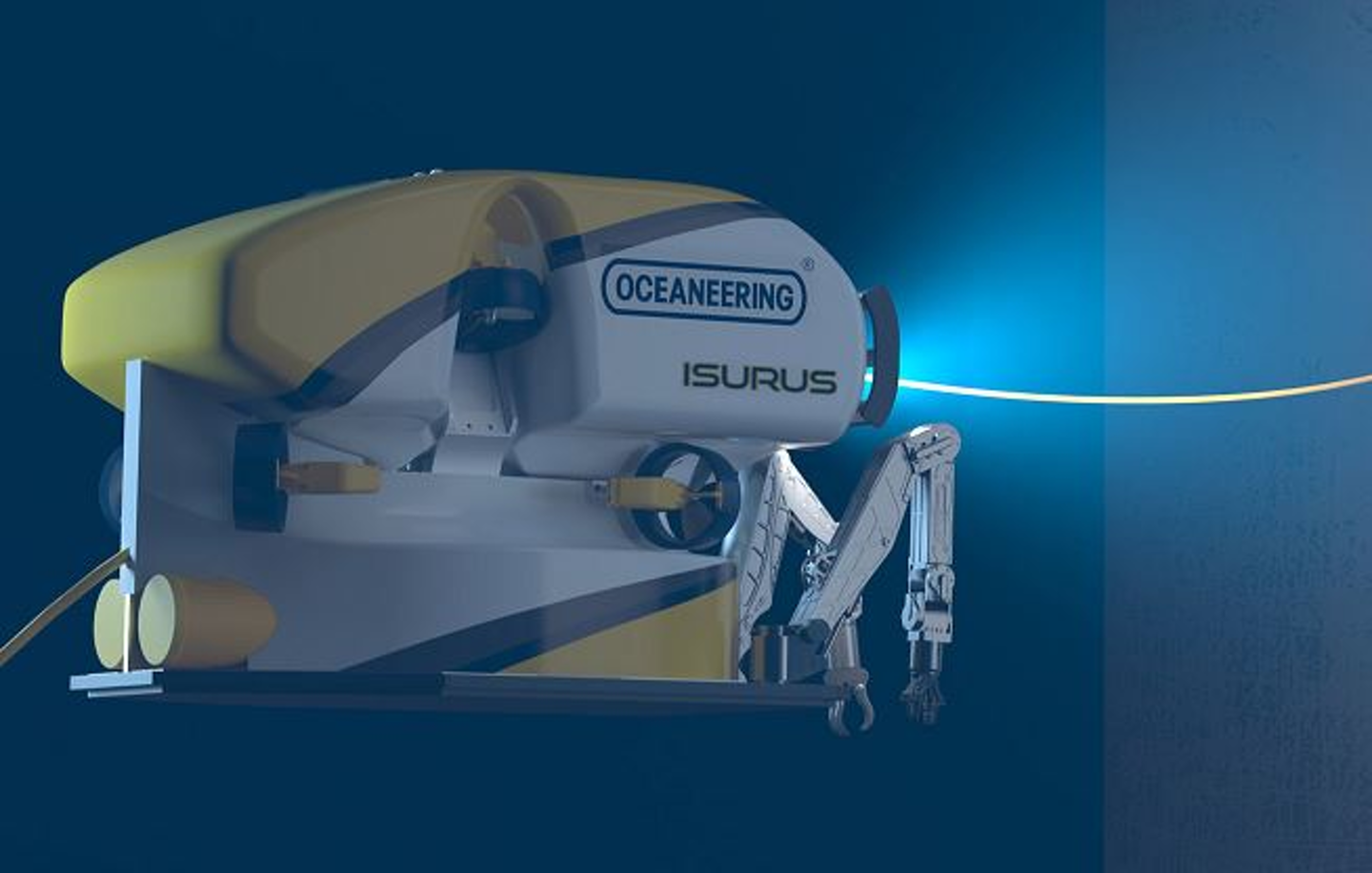Home › Forums › General › Guess what I’ve just heard/read? › New search starting for Air France black boxes
- This topic has 8 replies, 8 voices, and was last updated 14 years, 1 month ago by
mudflap276.
-
AuthorPosts
-
March 26, 2010 at 5:07 am #3386
R2D2
ParticipantNorway’s Seabed Worker is one of the ships that will be used in the third search of a crashed plane’s black box.
By ALAN CLENDENNING, Associated Press Writer Alan Clendenning, Associated Press Writer – Thu Mar 25, 7:18 pm ET
RECIFE, Brazil – The lead investigator of last year’s Air France jetliner crash that killed 228 people off the coast of Brazil said Thursday he hopes a third search for debris and flight and data recorders will be successful and help authorities determine what happened.
The 30-day operation, to begin next week after search ships sail for the mid-Atlantic on Sunday, will scour an area of seabed only one-tenth that combed in the two previous attempts, Jean-Paul Troadec, chief of the BEA French investigation agency, said at a news conference in northeastern Brazil.
The smaller area was the result of a collaborative effort by scientists, including from the U.S.-based Woods Hole Oceanographic Institution in Massachusetts, to reconstruct the trajectory of the Airbus 330’s debris and the time the wreckage was found, giving investigators a better idea of where to look, Troadec said.
"We think we have a good chance of finding the wreckage," he said.
Officials say that locating the flight data and voice recorders is crucial, since the 1,000 pieces of wreckage already recovered have provided no concrete information as to what caused the jet to crash June 1, killing everyone aboard.
The devices contain recordings of cockpit conversations and various data readings from the aircraft.
Without that information, investigators will probably never know why the jet bound from Rio de Janeiro to Paris flew straight into huge thunderstorms that other trans-Atlantic flights on similar routes took pains to avoid that day. Based on information gathered so far, investigators believe the plane was intact when it crashed into the ocean.
Troadec said the investigation so far has "shown that without finding the recorders that this investigation could never be conclusive and this accident could remain largely unexplained."
The latest search will employ two ships, one of which will deploy three sonar-equipped robot submarines weighing more than 5 metric tons each to search the seabed. The other will use sonar machines dragged on cables underwater to pore over the 770-square mile (2,000-square kilometer) target area.
Troadec said the wreckage is likely located on a rough, mountainous seabed, perhaps as many as 13,100 feet (4,000 meters) below the surface.
"These mountains are not trivial — it’s as rugged as the foothills of the Rockies down there and can get a lot worse than the Rockies — but there are some wide open spaces, valleys in there, that look very promising," said David Gallo, director of special projects for Woods Hole.
William Waldock, who teaches air-crash investigation at Embry-Riddle Aeronautical University in Prescott, Arizona, said that even if a main debris field is found, it does not mean the flight recorders can be located.
"A lot will depend on whether the recorders are still attached to a larger structure or if they separated from it during impact," he said. "Conceivably, they are looking for something that is a couple of feet long and 8 inches wide. Chances of finding something like that under 13,000 feet of water are not good."
Waldock said the effort "is probably the most difficult search I’ve seen simply because of the size of the area and the bottom configuration."
"But if they don’t look, their chances are zero," he added.
Automatic messages sent by Flight 447’s computers just before it crashed show it was receiving false airspeed readings from sensors known as Pitot tubes. Experts have said running into a violent storm at either too slow or too fast a speed at high altitudes can be dangerous.
Investigators have insisted the crash was likely caused by a series of failures and not just the Pitot tubes.
The new euro10 million ($13.3 million) search is jointly financed by Airbus and Air France, and comes after original search efforts last year that cost about euro9 million. The U.S. Navy and the National Transportation Safety Board will help, along with private companies and accident experts from Britain, Germany, Russia and Brazil.
The life span of "pingers" attached to the plane’s recorders is only about a month, but officials say submarines and boats equipped with sonar gear can find the wreckage from the jet even without such signals.
Gallo said the operators of the sonar systems being used have previously pinpointed objects as small as oil barrels and metal wire measuring about 4 inches (10 centimeters) in diameter. Because many of the plane’s parts, including the recorders, are made of metal, they stand out compared to rocks on the sea floor.
If debris fields are found, the two ships will hone in on those areas and search for the recorders. Other wreckage may also be lifted to the surface with cables or by remote-controlled submarines.
There could be "multiple items, like fuselage, landing gear, the cockpit," said John Ric Sasse, a civilian U.S. Navy search and recovery specialist involved in the effort. "All of this could be a large variety of items spread out over a large area, and once you have found it there are just the mechanics of recovery."
The second search for the recorders ended in August.
Investigators said 50 bodies were recovered in the first two searches. Troadec said searchers are prepared to recover any more remains that may be found.
___
Associated Press Writer Bradley Brooks in Rio de Janeiro contributed to this report
March 26, 2010 at 8:49 am #27056iROV
ParticipantWHOI Expertise, Technology, Tapped for Search for Air France Flight 447
The Woods Hole Oceanographic Institution (WHOI) is part of an international sea search operation formed to locate the deep-sea wreck site of Air France Flight 447 and to retrieve the flight recorders from the Airbus A 330.
Susan Avery, president and director of WHOI, said that the Institution “is honored to be part of this mission.” A private, independent organization dedicated to marine research, engineering and higher education, “WHOI brings to the undersea search operation the necessary technologies, the required talent and the familiarity with working in these types of seafloor terrains to help bring this search to a successful close,” Avery added.
The search is expected to last for approximately one month.
The new recovery mission will include the use of three autonomous underwater vehicles (AUVs), the REMUS 6000s, vehicles designed and operated by WHOI. Two of the vehicles are owned by the Waitt Institute for Discovery; the third is owned by IFM-GEOMAR of Germany.
These autonomous undersea vehicles are designed to operate in depths up to 6,000 meters (19,685 feet or 3.73 miles). As each vehicle covers an area in a “mowing” type pattern, it employs side-scan sonar to survey up to 600 meters to its left and right. Capable of staying underwater for up to 20 hours at a time, REMUS then returns to the ship, where scientists immediately download its data. If the data contains evidence of any debris or other items of interest undersea, a REMUS 6000 will be dispatched to gather more detailed, up-close images using high-resolution cameras located on the bottom of the vehicle.
The AUVs will be operated from the Norwegian ship, the M/V Seabed Worker, which will also be equipped with the Triton XLX remotely operated vehicle (ROV). The mission will also employ the M/V Anne Candies, out of New Orleans, which will carry the towed side-scan sonar Orion and the CURV21 ROV, both operated for the US Navy by Phoenix International.
David Gallo, WHOI director of special projects and WHOI project leader, said he is confident, “given the necessary time and resources” that the aircraft will be found. He estimates the investigators, using the AUVs in tandem, will be able to search about 30 square miles a day.
WHOI researchers are experienced in conducting deep-sea forensic investigations. In 1997, a team from WHOI responded to a request from the British government and European Commission to assist in solving the circumstances surrounding the loss of the British bulk ore carrier, Derbyshire. Following the successful conclusion of that investigation, Britain’s Prime Minister Tony Blair sent a thank-you note to Bill Clinton that praised the WHOI team and stated that without their participation, the mystery would not have been solved.
And in 1985, a WHOI-led team located the wreck of the RMS Titanic.
“Few institutions are as well equipped as WHOI for this mission,” said Gallo. “The Mid-Ocean Ridge is a feature that we have been exploring for more than 30 years. The terrain will be extremely rugged and the search will be difficult, but this is something that we have been doing as a part of our mission to explore and understand the global oceans.”
The Bureau d’Enquêtes et d’Analyses, BEA, the French Bureau of investigation and analysis for civil aviation safety is leading the safety investigation and is responsible for all phases of the operation.
The Woods Hole Oceanographic Institution is a private, independent organization in Falmouth, Mass., dedicated to marine research, engineering, and higher education. Established in 1930 on a recommendation from the National Academy of Sciences, its primary mission is to understand the oceans and their interaction with the Earth as a whole, and to communicate a basic understanding of the oceans’ role in the changing global environment.
Last updated: March 25, 2010
March 26, 2010 at 11:11 am #27057James McLauchlan
ParticipantI love the way the press ‘translate‘ our equipment into ‘public speak‘ 🙂
The latest search will employ two ships, one of which will deploy three sonar-equipped robot submarines weighing more than 5 metric tons each to search the seabed. The other will use sonar machines dragged on cables underwater to pore over the 770-square mile (2,000-square kilometer) target area.
So three work class ROV’s and a towed fish or two 😉
March 26, 2010 at 11:47 am #27058Glevum
ParticipantJames,
They are using 3 Remus 6000 AUVs not ROVs
March 26, 2010 at 12:57 pm #27059James McLauchlan
ParticipantJames,
They are using 3 Remus 6000 AUVs not ROVs
Cheers for that:
So three AUV’s and a towed fish or two 😉
March 27, 2010 at 12:20 am #27060Mark DuPriest
Participant"The AUVs will be operated from the Norwegian ship, the M/V Seabed Worker, which will also be equipped with the Triton XLX remotely operated vehicle (ROV). The mission will also employ the M/V Anne Candies, out of New Orleans, which will carry the towed side-scan sonar Orion and the CURV21 ROV, both operated for the US Navy by Phoenix International."
March 27, 2010 at 3:46 am #27061mustafa bigen
ParticipantGraham Gardner was my first officer on the 7 seas then moved on to locknagar as master. We misted that flight by about a week as we had about 5 vessels out there working at the time. I think i speak for all of the s club lads and bow their heads in respect and hope that the truth will a vale.
March 27, 2010 at 8:17 am #27062Savante
Participanthear hear. ❗ :tup:
March 27, 2010 at 8:18 am #27063mudflap276
ParticipantAnne Candies used to have a UHD onboard. im not sure if they are using it along with the REMORA. not a bad boat but i would much rather be on something much bigger in those waters.
mud
-
AuthorPosts
- You must be logged in to reply to this topic.



